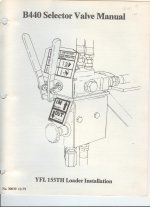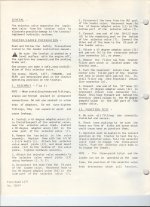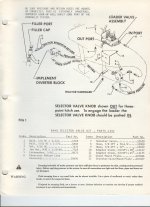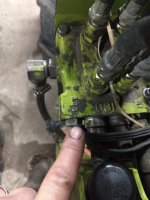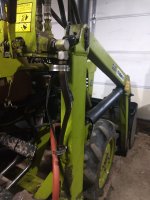rScotty
Super Member
- Joined
- Apr 21, 2001
- Messages
- 9,665
- Location
- Rural mountains - Colorado
- Tractor
- Kubota M59, JD530, JD310SG. Restoring Yanmar YM165D
I don't really know how much I've lifted with that loader. Something over 500 pounds in the bucket would be my guess. Yours is the same as mine. I'm sure I've tried to lift all it will do. The hydraulics aren't all that powerful on the YM155/165 loader, so it can handle anything it will lift, and you won't hurt anything if the load won't lift.
An interesting feature of that loader is that the breakout force at the bucket lip is about twice what it can lift to full height. My guess is that this was done to protect the front axle bearings. What it means is that even if the loader with forks attached cannot lift a load, it may still be able to rotate the bucket enough to get the load off the ground. That may not help with a project, but it's a curious feature of this loader.
I've attached the specs on the stock loader. The first is the manufacturer's advertising sheet while the second seems to be the result of an actual test. They are fairly close. Don't get too hung up on the differences, just keep in mind that how much anything can lift depends on how far the weight is from the pivot point. The longer the lever arm, the less weight can be lifted.
The key is a formula like this: Weight times Lever Arm Length = Torque
The specs shows that we can lift (approximently) 500 pounds with a lever arm measuring roughly (17+25+10) or 52" from the loader upright to the Center of Gravity of the loader bucket. So our torque is 52 inches times 500 = a torque of 26000 inch pounds.
That is our answer: we can change the lever arm or the weight, but when we multiply them together we find our maximum lift when the the answer is 26,000 inch pounds. Twenty six thousand inch pounds is the maximum torque our YM155 loader hydraulics can develop around the pivot point when lifting a load to full height. We can call this 26000 inch pounds our max torque.
So to answer your question, suppose we put some short forks on the bucket so that we can lift a different load that is farther out. This new load has it's center of gravity about two feet out beyond the lip of the bucket. This new load might be pallet with a load on it or maybe a couple of short logs we want to carry somewhere.
Anyway, now we have moved the center of gravity of the load out farther from the loader uprights. our lever arm is now longer. In fact it is about (17+25+10+11+24) or 87 inches long. To find out how much we can lift now, we divide our max torque by the length of our new lever arm.
26000 divided by 87 = 298 pounds. And that's your answer. Out where you will be using your forks you can lift about 300 pounds.
Enjoy!
rScotty

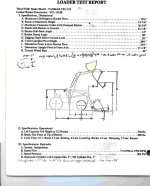
An interesting feature of that loader is that the breakout force at the bucket lip is about twice what it can lift to full height. My guess is that this was done to protect the front axle bearings. What it means is that even if the loader with forks attached cannot lift a load, it may still be able to rotate the bucket enough to get the load off the ground. That may not help with a project, but it's a curious feature of this loader.
I've attached the specs on the stock loader. The first is the manufacturer's advertising sheet while the second seems to be the result of an actual test. They are fairly close. Don't get too hung up on the differences, just keep in mind that how much anything can lift depends on how far the weight is from the pivot point. The longer the lever arm, the less weight can be lifted.
The key is a formula like this: Weight times Lever Arm Length = Torque
The specs shows that we can lift (approximently) 500 pounds with a lever arm measuring roughly (17+25+10) or 52" from the loader upright to the Center of Gravity of the loader bucket. So our torque is 52 inches times 500 = a torque of 26000 inch pounds.
That is our answer: we can change the lever arm or the weight, but when we multiply them together we find our maximum lift when the the answer is 26,000 inch pounds. Twenty six thousand inch pounds is the maximum torque our YM155 loader hydraulics can develop around the pivot point when lifting a load to full height. We can call this 26000 inch pounds our max torque.
So to answer your question, suppose we put some short forks on the bucket so that we can lift a different load that is farther out. This new load has it's center of gravity about two feet out beyond the lip of the bucket. This new load might be pallet with a load on it or maybe a couple of short logs we want to carry somewhere.
Anyway, now we have moved the center of gravity of the load out farther from the loader uprights. our lever arm is now longer. In fact it is about (17+25+10+11+24) or 87 inches long. To find out how much we can lift now, we divide our max torque by the length of our new lever arm.
26000 divided by 87 = 298 pounds. And that's your answer. Out where you will be using your forks you can lift about 300 pounds.
Enjoy!
rScotty


